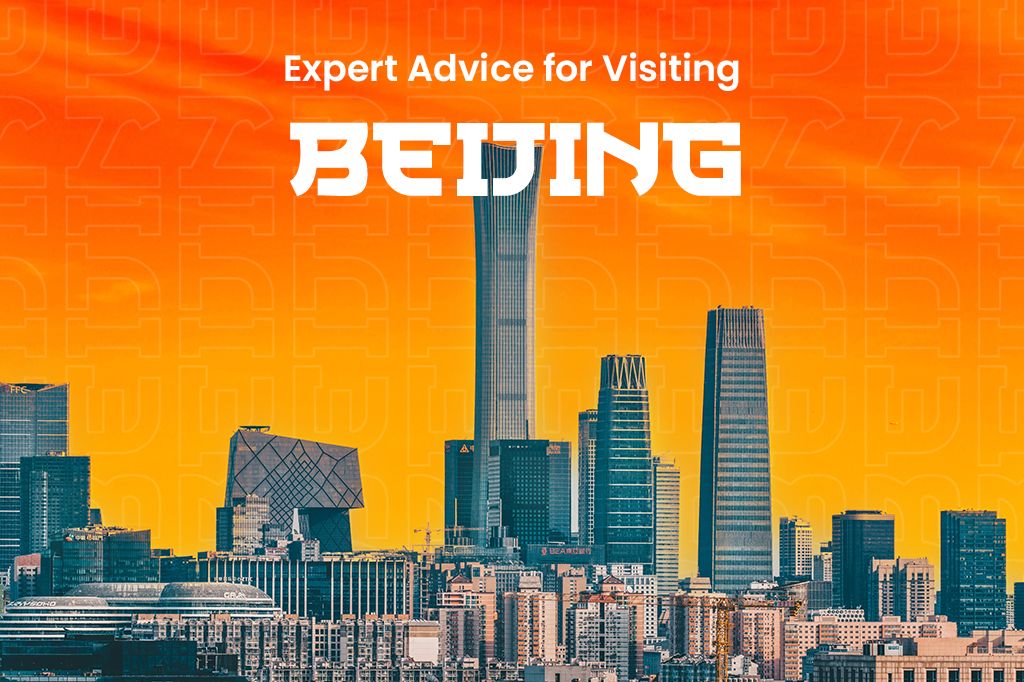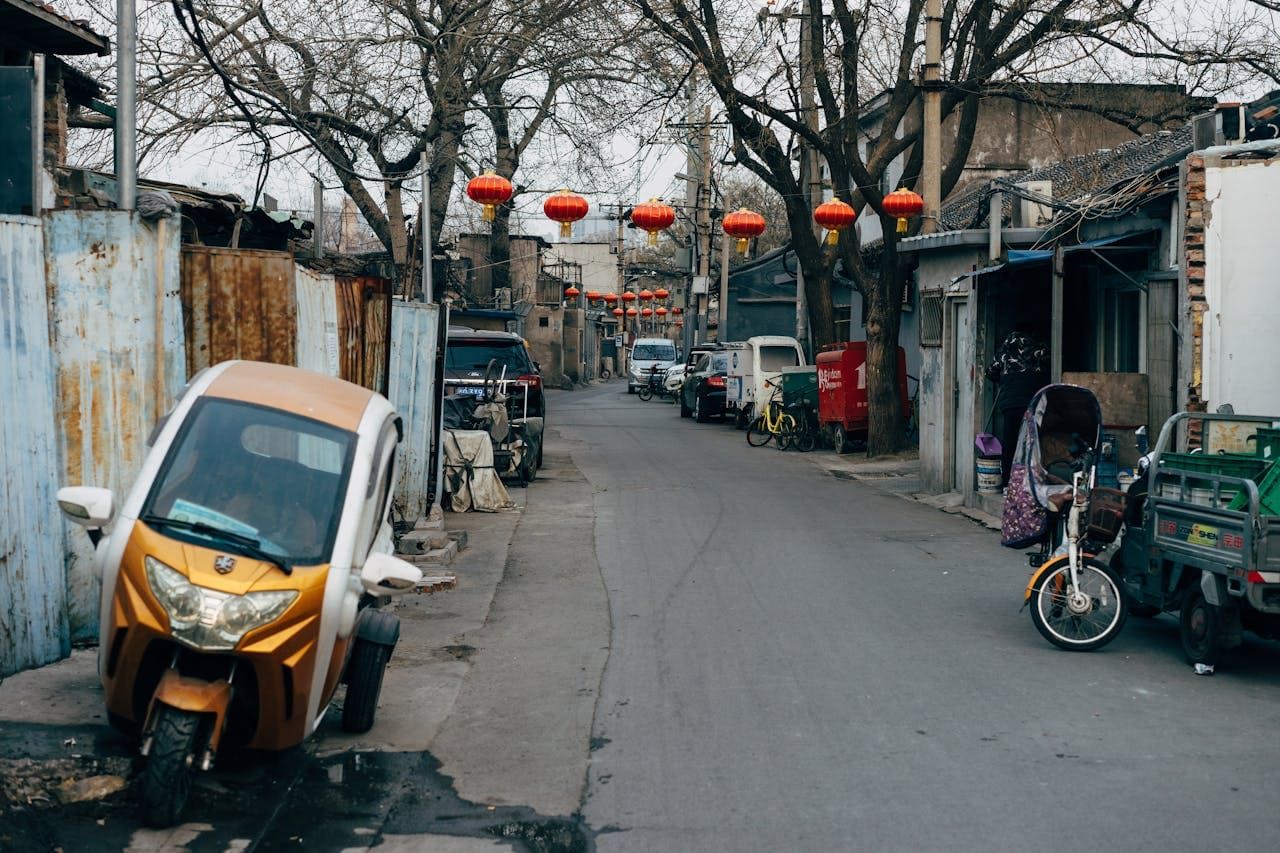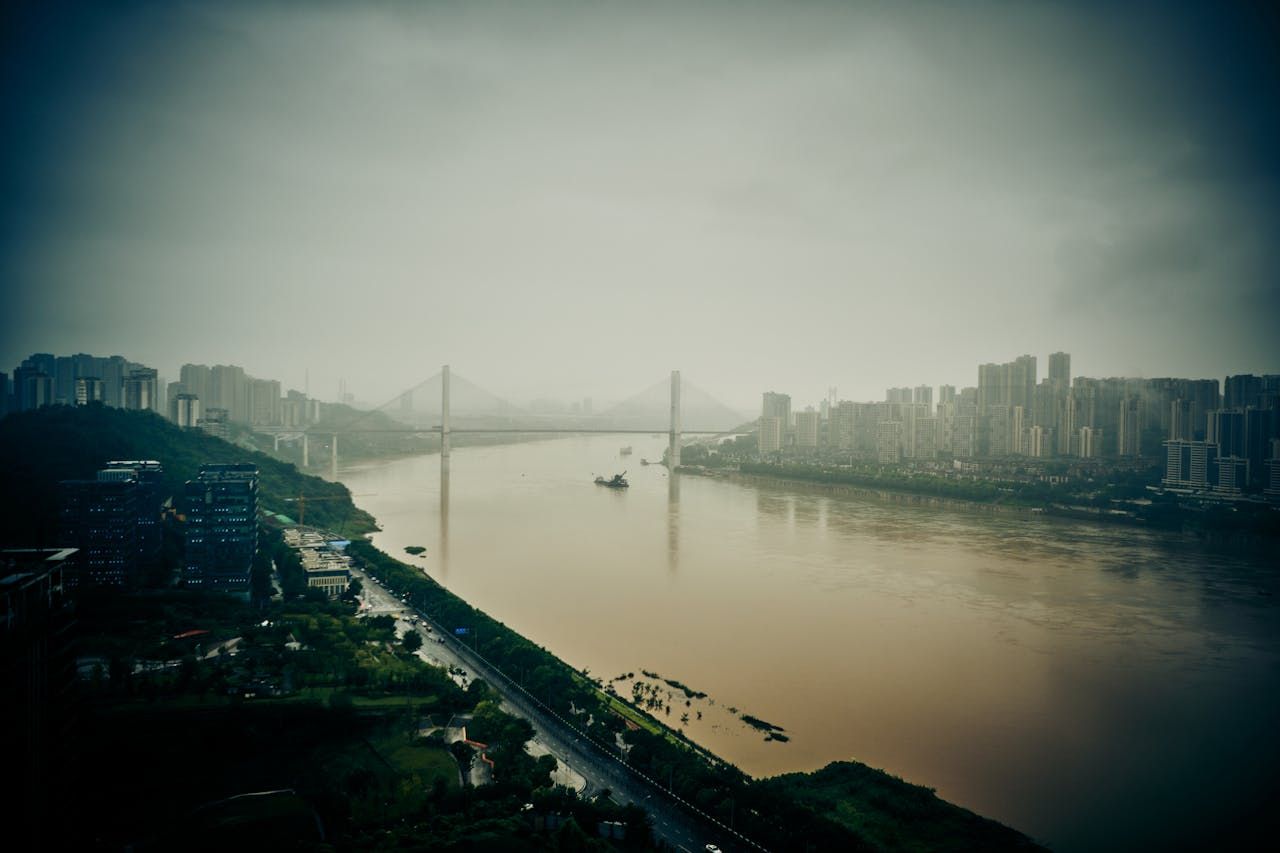Beijing can be overwhelming for first-time visitors with its size, crowds, and fast pace. Ancient palaces and temples sit alongside modern skyscrapers, while narrow alleyways (hutongs) are just steps away from high-end shopping districts. There’s much more to discover beyond the typical tourist hotspots.
Here’s what you really need to know before visiting Beijing.

Picture by zhang kaiyv on Unsplash
What First-Time Visitors Need to Know Before Visiting Beijing
Many first-time visitors land in Beijing expecting little more than ancient temples and thick smog. But that picture doesn’t quite do the city justice. In Beijing, you’ll see imperial palaces alongside tech startups, high-speed trains zipping past quiet hutong alleyways, and street food vendors working just steps from sleek shopping centers.
Beijing stretches out in all directions, and getting from one place to another can take more time than expected. Traffic is a constant, and the most popular sights stay busy all day. Getting around also means navigating the language barrier. English isn’t widely spoken, even in tourist areas, which can make basic interactions tricky.
As you move through the city, the fast pace and sheer number of people can feel overwhelming. Crowds are part of life here: on the streets, in the markets, and at the major sights. Personal space tends to shrink, and adapting to that can make the experience smoother.
You’ll also notice that security is a great part of daily life. Bag checks and X-ray machines are standard at subway stations, train terminals, and major tourist spots. While it might seem like a hassle at first, they are quick and routine, and once you’re used to them, they just become part of the rhythm of the city.
The Must-Sees (with Local-Lens Alternatives That Feel More Authentic)
Beijing has many important places to visit, along with quieter spots where you can see how locals live. The Forbidden City is one of the most visited sites. It’s a large palace complex that was home to Chinese emperors. After walking through its many buildings and courtyards, you can take a break in nearby Jingshan Park, which has a hill with a view of the city. Beihai Park offers open green space where people often do tai chi or play cards. You can also try local food at Wangfujing Snack Street, which is close by.
The Great Wall has several sections, each with different features. Badaling is the easiest to reach and has smooth walkways and handrails, but it’s often very crowded. Mutianyu has fewer people and more trees, with options like a cable car or toboggan. Jinshanling is harder to get to, but quieter and less restored, making it better for hiking.
The 798 Art District is in a former factory area and now has art galleries, shops, and cafes. It’s a popular place, but if you go beyond the main streets, you can find small galleries and artist studios that are less commercial.
Tiananmen Square is a large open area with historical landmarks. Visitors must go through ID checks and bag scanners to enter. Photography is allowed in most areas, but not near government buildings, so it’s important to know the rules before going.
Some local places are less crowded and show more of daily life in Beijing. Longfu Temple Market sells traditional goods and is used by local shoppers. Guozijian Street, near the Confucius Temple, has old buildings and fewer tourists. Walking through hutongs, narrow lanes with old-style courtyard homes, lets you see local shops, teahouses, and places where people live.
Hidden Beijing and Local Favorites
Beijing has plenty of places that locals love but aren’t on the typical tourist lists. If you want to see how people in Beijing spend their weekends, these give a peek into everyday life.
Temple of Heaven Park (Tiantan Park) is a popular place where locals gather early in the morning for activities like tai chi, dancing, and music practice. If you go before 9 a.m., you can experience this without the tourist crowds. Beihai Park, near the Forbidden City, is another spot where people enjoy boating, playing cards, singing, and dancing. These parks are where locals hang out and relax.
If you’re willing to venture outside the city center, places like Xinzhuang Village in Changping District have weekend markets selling local snacks, crafts, and fresh produce. Nearby villages like Shangyuan and Xiayuan are home to artist communities with galleries and independent bookstores, perfect for those looking for something more cultural.
While the Temple of Heaven is famous, there are other temples, like Longfu Temple and the Confucius Temple (on Guozijian Street), that don’t attract many tourists. These temples are quieter and great for seeing traditional architecture and local religious practices. Visiting early in the morning or during the week means fewer crowds, and many temples also have small gardens or courtyards where locals go to pray or meditate.
Beijing’s flea markets and independent bookstores like Panjiayuan Antique Market are full of secondhand goods, antiques, and crafts that show off a different side of the city’s culture. Independent bookstores in hutong neighborhoods like Wudaoying Hutong or Nanluoguxiang offer local books and art, and sometimes host small events. These spots are popular with locals interested in culture, not tourists.
Beijing’s hutongs, narrow alleys lined with old-style homes, are still a big part of local life. Areas like Wudaoying Hutong and Nanluoguxiang have cafes, shops, and galleries mixed in with residential areas.
Smart Survival Tips for Navigating the City Like You Live There
Getting around Beijing is straightforward if you use the right tools and know the system. The subway is the most reliable and affordable option. It has over 27 lines and more than 400 stations. Trains run from about 5:00 a.m. to 11:00 p.m. All stations have security checks, and signs are in both Chinese and English. Fares start at 3 RMB for the first 6 kilometers and increase based on distance. Instead of buying single tickets, it’s more efficient to use a Yikatong card, a reloadable transport card accepted on subways, buses, and some taxis. You can buy and top up the card at subway stations, convenience stores, or the airport. Public transportation rarely accepts cash, so carrying this card or using a mobile payment app is necessary.
The subway is usually faster than taking a taxi, especially during busy hours when traffic slows down. Taxis use meters, but some drivers may avoid short trips or take indirect routes. The Didi app is a more reliable option for booking rides, but it often requires a Chinese phone number. International versions of the app may offer limited access, and hotel staff can sometimes help with booking if you don’t have a local number.
Subway stations are well-labeled, and electronic signs show which station is next. However, transferring between lines can involve long walks. Trains are crowded between 7–9 a.m. and 5–7 p.m., so travel outside those hours if possible. When using the subway, stand on the right side of escalators, wait in line for trains, and don’t eat on board. A Yikatong card loaded with 100–200 RMB covers several days of travel. You can return the card for a small deposit refund when leaving the city.
Public toilets in Beijing often use squat-style fixtures, especially in parks, markets, and older subway stations. Western-style toilets are available in some malls, hotels, and tourist sites, but not everywhere. It’s practical to carry toilet paper or tissues and hand sanitizer, as these are not always provided.
For internet access in Beijing, try a free eSIM card from Yoho Mobile for instant mobile data in most countries. No SIM card, no contracts, just a quick setup, and you’re online in minutes. If you choose a plan later, use code YOHO12 at checkout for a 12% discount.
Avoiding Tourist Traps
In Beijing, tourists can encounter scams that target their lack of local knowledge. One common scam is the Tea House Scam, which starts with friendly locals approaching tourists in busy areas like Tiananmen Square or Wangfujing Street. They might invite you to a traditional tea ceremony, which seems harmless, but the bill can be hundreds or thousands of yuan. The scammer may suggest splitting the cost, but this is part of the trick. To avoid this, it’s best to decline any invitations to tea ceremonies or secluded locations. Talking to locals is fine, but avoid going to unknown places where you haven’t agreed on terms in advance.
Another scam involves rickshaw rides, especially near the Forbidden City. Drivers might initially offer a reasonable price, like 40 RMB, but once the ride ends, they demand much more, sometimes showing a price list with inflated amounts. The driver may act confused or try to pressure you into paying. To avoid this, it’s better to use taxis or ride-hailing apps. If you do take a rickshaw, agree on the price before starting, and refuse to pay more if the price increases afterward.
Other scams include fake guides near major attractions who insist on taking you to overpriced shops, unlicensed taxis charging excessive fares, and counterfeit ticket sellers. To protect yourself, buy tickets only from official locations, use reputable tour guides or agencies, and stick to metered taxis or well-known ride-hailing apps like Didi.
Recently, new scams have appeared, such as fake QR codes. Scammers may give you a QR code that leads to a payment or personal information request. Another scam involves people asking for help getting home, only to ask for money or other assistance. To avoid these, don’t scan QR codes from unknown sources, and don’t give money to strangers who approach you with urgent requests.
When dealing with aggressive scammers, it helps to know how to refuse politely in Mandarin. Phrases like “bù yào” (不要), meaning “no,” or “méi yǒu qián” (没有钱), meaning “I don’t have money,” clearly convey that you’re not interested. Stay calm and walk away if the situation becomes tense. Non-verbal cues like shaking your head or holding up your hand can also help avoid further interaction.
Street Smarts & Cultural Etiquette
In Beijing, a light handshake or slight bow is common when meeting someone, especially older individuals. Saying “Ni hao” (你好), which means “hello,” is a polite greeting. If you’re unsure, a smile and a nod will work as a respectful gesture. Avoid hugs or back slaps when meeting someone for the first time. In formal settings, use a person’s family name followed by a title like “Mr.” or “Ms.” People in Beijing tend to be calm and polite in public, so it’s expected to speak quietly in places like public transport or restaurants. Loud talking and public displays of affection are uncommon, and respecting personal space, even in crowded areas, is important.
Tipping is not a usual practice in Beijing. Most restaurants, taxis, and shops do not accept tips. In high-end hotels or tours aimed at foreigners, tipping might be allowed, but it is still not expected. Taxi drivers, for example, are not allowed to accept tips. A simple thank you or a small gift is often enough if you want to show appreciation.
Meals in Beijing are often served family-style, with dishes shared in the center of the table. Wait for the host or the oldest person to begin eating before you start. Use the provided serving utensils when serving food, not your own chopsticks. A few important chopstick rules to keep in mind: Don’t stick chopsticks upright in a bowl of rice, as this looks like an incense offering at funerals and is considered disrespectful. Avoid pointing chopsticks at others or tapping them on dishes. When not using chopsticks, place them neatly on the chopstick rest or across your bowl.
Be careful about what you photograph in Beijing. Taking photos of government buildings, military sites, or police personnel is prohibited and could cause trouble. Always check for signs indicating whether photography is allowed. In crowded tourist areas, be respectful and ask for permission before taking pictures of locals, especially older people or children.
As a foreigner, you may attract attention or experience people staring at you. This is usually due to curiosity rather than rudeness. A calm smile or polite nod can help ease any awkwardness. Avoid staring back or showing discomfort, as this could make the situation tense. A simple “Ni hao” might turn the moment into a friendly interaction.
Pollution and Weather Extremes
Beijing’s air quality has improved, but smog can still be a problem. Many people living in Beijing check air quality reports daily and adjust their plans. On days with high pollution, they use air purifiers indoors and wear masks outside. Some avoid outdoor activities when pollution is high. Others use these apps to help track the air quality and get alerts while in Beijing:
-
IQAir AirVisual: This app shows real-time and past data on air pollution like PM2.5, ozone, and carbon monoxide. It gives forecasts and health advice, and it can also monitor indoor air quality if you have compatible devices.
-
AQICN (Air Quality Index China): This app gives real-time air quality info for Beijing and other Chinese cities, plus health advice and historical data.
When to Go: Best Times to Visit (and When to Absolutely Avoid)
The best times to visit Beijing are in spring (April to May) and autumn (September to October). During these seasons, the weather is mild, the skies are clear, and there are fewer tourists. In spring, temperatures warm up and the city’s parks and gardens are full of blooming flowers. In autumn, the cooler weather and colorful leaves make it a great time for outdoor activities.
These seasons also coincide with popular festivals and cultural events, which can make your visit more interesting. However, because more tourists come during these times, flights and hotels can be more expensive. Booking early can help you find better prices and availability.
You may also like to read The Best Time to Visit China in 2025 for more detailed travel tips and advice.
Conclusion
After visiting Beijing, many travelers find themselves thinking about what they wish they had known before the trip. It’s not just the famous sights that stick with people, but also the unexpected moments that make the city feel alive.
Some wish they’d spent more time in the quieter, less touristy areas where they discovered authentic food and felt like they were seeing the real Beijing, not just the highlights. The contrast between the historic and the contemporary is something that stays with many travelers long after they leave.
For many, it’s these unexpected, personal experiences that make Beijing unforgettable. Whether it’s wandering down a side street or chatting with someone over tea, it’s the connections and surprises that really leave an impression. And sharing these stories with others helps future travelers get a glimpse of the real Beijing, beyond the famous sites and tourist paths.





